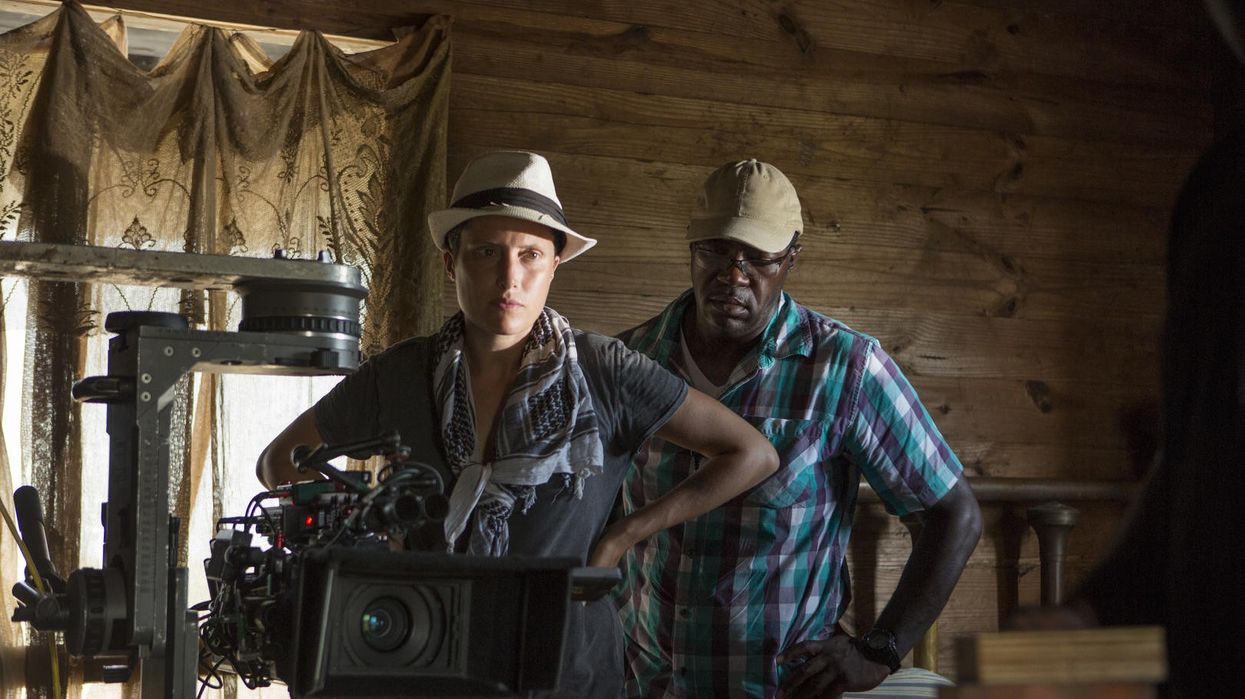Top DPs Deakins, Morrison, Kaminski and More Reveal Lessons Learned On Set
In a rare feat, award-winning DPs pivot the camera onto themselves.

The highly informative and watchable roundtables hosted by The Hollywood Reporter are in full swing this awards season, and the latest edition welcomes a No Film School favorite: Cinematographers.
Current DPs in the "Oscar race" Roger Deakins (Blade Runner 2049), Hoyte Van Hoytema (Dunkirk), Dan Laustsen (The Shape of Water), and Rachel Morrison (Mudbound) each received nominations from the American Society of Cinematographers (ASC) this afternoon, and they, along with Janusz Kaminski (The Post) and Robert Elswit (Roman J. Israel, Esq.), sat down for the THR roundtable discussion not only to discuss their current work, but the role a cinematographer plays in helping a director achieve their vision and how to move quickly when a burning oil derrick refuses to be put out. Below are a few takeaways.

Embrace mistakes and use them to your advantage
It's no secret that things can occasionally go wrong on a film set. When they do, remain positive, find the good in the "mistake," and use it. Robert Elswit won an Academy Award for lensing Paul Thomas Anderson's 19th-century epic There will be Blood, but not everything ran according to plan. In the famous oil spill sequence, a stubbornly blazing fire could not be put out. No worries: Anderson and Elswit found a way to speed up the day's shoot and use it in the finished film.
"It actually made the scene work in a much more interesting way—it came alive."
"Paul Thomas Anderson loves accidents," Elswit recalled on the roundtable, "and on There Will Be Blood, we were burning a wooden oil derrick, which was supposed to burn a little bit and then we'd put it out. But it caught on fire and couldn't be put out, so we had to shoot the entire sequence kind of really fast in sort of a crazy way, and it ended up working out really well because of the chaos of that moment. It actually made the scene work in a much more interesting way—it came alive."
Elswitt 's recent, LA-shot work can currently be seen on the big screen in Dan Gilroy's Roman J. Israel, Esq. and George Clooney's Suburbicon.

Work with a director who provides trust and allows you to take chances
Having been a frequent collaborator of Steven Spielberg's since Schindler's List in 1993, Polish cinematographer Janusz Kaminski knows a thing or two about maintaining a good relationship with a prolific, larger-than-life director.
"When you work with collaborators who encourage you to take chances, it's the ideal thing."
A six-time Academy Award nominee (five of those nominations coming as a result of a Spielberg-directed film), Kaminski feels secure in exiting his comfort zone and trying something new creatively. His director will back him up.
"It's not this comfortable life we've chosen where we just make movies and work with movie stars," Kaminski admitted, "[but] we express artistically through our work and you want to take chances. When you work with collaborators who are willing to do this and encourage you to take chances, it's the ideal thing." Kaminski's work can next be seen in this spring's Ready Player One, marking his 18th collaboration with Spielberg.

Work to your strengths and expand on them
When Rachel Morrison received the first draft of Dee Rees' screenplay for Mudbound, she knew it would be a great fit. Why? Because images of the film's central location (1940s Mississippi) inspired her to get into the profession in the first place. If offered a project that you can almost see through personal sense memory, trust your instincts. If you get excited at the chance to shoot it, shoot it!
"[Mudbound takes place] in sort of my dream period," Morrison reflected, "and I came up in photography, and Dust Bowl-era photography is a lot of the reason that I got behind the camera in the first place."

Make the effort to diversify your crew
If you've been given the authority to assemble your crew, don't take the responsibility lightly. Make it count, hiring as many different kinds of men and women as possible. If your team consists exclusively of white males, observe that and change it, not out of mere obligation, but because it will only benefit the finished work. Different eyes from different backgrounds should be welcomed, not feared and made to be kept down.
"I always try to get some women in the camera department," The Shape of Water DP Dan Laustsen made clear, "Always. It's more difficult in the lighting department and with grips, but in the camera department it changes the whole feeling, the trust, and the set gets much more relaxed. For me, it's a very big deal to try to get some women in the department."
Are these tips helpful? What do you feel is the core trait of a solid cinematographer? Let us know in the comments below and be sure to dive further into the roundtable discussion over at The Hollywood Reporter.












